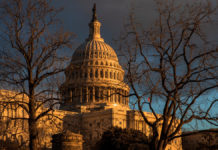The collapse in world crude oil prices since February is taking a toll on U.S. inflation expectations which are now at their lowest levels since the 2007-2009 recession.
But some strategists think there’s scope for price pressures to build up again once the COVID-19 pandemic passes and the deflationary impact of the oil-market slump disappears, creating an opportunity to invest in inflation protected bonds.
“With market-based inflation expectations now at such beaten-up levels, and with the disinflationary effect of falling energy prices set to fade, we see an opportunity to play for a cyclical rebound in inflation breakevens across the developed markets,” said analysts at BCA Research, in a Tuesday note.
BCA analysts expect Brent crude oil, the global benchmark, to rise to $42 a barrel by the end of this year, and $78 by the end of 2021.
Brent futures for June delivery
BRNM20,
settled at $20.46 a barrel on Tuesday, and $12.34 a barrel for U.S. crude
CLM20,
FactSet data show.
Oil is a crucial input for a broad basket of consumer goods and some industrial products like plastics.
A recovery in crude oil prices could thus have a knock-on impact for consumer price inflation, especially as the muted inflation backdrop even before the COVID-19 pandemic led swings in energy prices to become “the marginal driver of both realized and expected inflation,” said the BCA analysts.
Based on current trading in U.S. Treasury inflation-protected securities, or TIPs, price levels were expected to average 1.14% over the next decade.
Investors buying up inflation insurance may be making a bet that prices are unlikely to undershoot the U.S. historical average of around 2% for an extended stretch of time, said market participants.
Last week, an auction for $17 billion of 5-year Treasury inflation-protected securities saw the strongest take-up since 2009.
The iShares TIPS Bond exchange-traded fund
TIP,
is up nearly 5% this year, reflecting the gains in government bond prices as cash has flowed into safe haven investments after March’s stock-market crash.
But traders in the TIPs market say it’s difficult to sometimes tell if U.S. Treasury auctions are an accurate reflection of demand for inflation insurance, given that trading in such securities remains thin even after the Federal Reserve’s purchases of hundreds of billions of government bonds over the past few weeks.
“There’s a lack of liquidity in the secondary market,” said Tim Magnusson, senior portfolio manager at Garda Capital Partners, in an interview.
Even now, he had a hard time buying and selling TIPs in significant size, as primary dealers to deal with the Federal Reserve are still unwilling to free up space on their trading books to act as middlemen for some government bond securities.
The strong auction demand could thus reflect the way in which the sale of inflation protected U.S. Treasury debt offers the main option for money managers to top up on TIPs, said Magnusson.
Source : MTV













